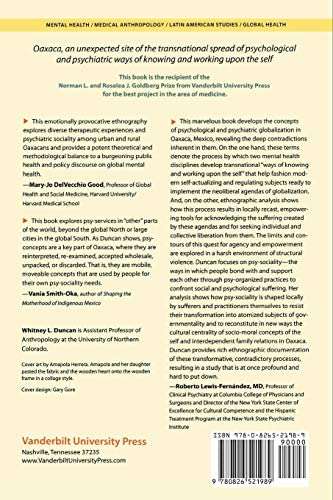Stress is a commonly used word that describes feelings of strain or pressure. The causes of stress are exceedingly varied. Perhaps you are stressed out by your job, you become nervous when meeting new people, or you get anxious when your daily routine is disrupted.
To reduce stress levels, you may seek comfort in several ways. Maybe you find solace in the company of a trusted friend. Perhaps you relieve stress when occupied by routine chores like cleaning the house. Or maybe you blow off some steam with physical exercise.
“Our dogs can become stressed too.”
Our dogs can become stressed too. Since we know how stress makes us feel, we certainly want to help alleviate our pet’s stress as well. However, our dogs do not voice their feelings, slam down the phone, or have a tantrum, so how can we tell they are stressed? The signs of anxiety in dogs are often subtle. In fact, some stress-related behaviors mimic normal behaviors.
What are some of the indicators of stress in dogs?
Pacing or shaking. You have seen your dog shake after a bath or a roll in the grass. That whole body shake can be amusing and is quite normal…unless it is occurring as the result of a stressful situation. For example, dogs are commonly stressed when visiting the veterinarian. Many dogs “shake it off” when they descend from the exam table and touch down on the ground. Dogs, like people, also pace when agitated. Some dogs walk a repeated path around the exam room while waiting for the veterinarian to come in.
Whining or barking. Vocalization is normal self-expression in dogs but may be intensified when they are under stress. Dogs that are afraid or tense may whine or bark to get your attention, or to self soothe.
Yawning, drooling, and licking. Dogs yawn when they are tired or bored, they also yawn when stressed. A stressful yawn is more prolonged and intense than a sleepy yawn. Dogs may also drool and lick excessively when nervous.
Changes in eyes and ears. Stressed dogs, like stressed people, may have dilated pupils and blink rapidly. They may open their eyes really wide and show more sclera (white) than usual, giving them a startled appearance. Ears that are usually relaxed or alert are pinned back against the head.
Changes in body posture. Dogs normally bear even weight on all four legs. If a healthy dog with no orthopedic problems shifts his weight to his rear legs or cowers, he may be exhibiting stress. When scared, dogs may also tuck their tails or become quite rigid.
Shedding. Show dogs that become nervous in the show ring often “blow their coat”. Dogs also shed a lot when in the veterinary clinic. Although less noticeable in outside settings, such as visiting a new dog park, shedding increases when a dog is anxious.
Panting. Dogs pant when hot, excited, or stressed. If your dog is panting even though he has not exercised, he may be experiencing stress.
Changes in bodily functions. Like people, nervous dogs can feel a sudden urge to go to the bathroom. When your dog urinates shortly after meeting a new canine friend, he may be marking territory and reacting to the strain simultaneously. Refusal of food and loss of bowel function are also stress indicators.
Avoidance or displacement behavior. When faced with an unwelcome situation, dogs may “escape” by focusing on something else. They may sniff the ground, lick their genitals, or simply turn away. Ignoring someone may not be polite, but it is surely better than being aggressive. If your dog avoids interaction with other dogs or people, do not force the issue. Respect his choice.
Hiding or escape behavior. An extension of avoidance, some tense dogs literally move behind their owners to hide. They may even nudge their owners to prompt them to move along. As a means of escape, they may engage in diversion activities such as digging or circling or may slink behind a tree or parked car.
How can I help my dog handle stressful situations?
In order to differentiate stress signs from normal behavior, you must be familiar with your dog’s regular demeanor. Then you can tell if he is licking his lips because he is anxious or because he wants a treat.
When relaxed, he will have semi-erect or forward-facing ears, a soft mouth, and round eyes. He will distribute his weight evenly on all four paws. Distinguishing normal behavior from stress signs will help you quickly and effectively diffuse an uncomfortable situation.
“If your dog is stressed, first remove him from the stressor.”
If your dog is stressed, first remove him from the stressor. Find a quiet place for him to regroup. Resist the urge to overly comfort him. If you want to pamper him with petting or treats, make him earn them first by performing an activity (e.g., sitting). Responding to routine commands distracts the dog and provides a sense of normalcy. It is amazing how comforting sit, down, and heel can be to a worried dog.
If your dog becomes consistently stressed, see your veterinarian. After ensuring that your dog’s behavior does not have a medical basis, your veterinarian may refer you to a trainer or veterinary behaviorist to evaluate stress-related issues. They may also prescribe anxiety-reducing medications if appropriate.
As with humans, exercise can be a great stress reducer. Physical activities like walking or playing fetch help both you and your dog release tension. It is also good to provide your dog with a safe place in the home where he can escape anxious situations. Everybody enjoys a calm place to retreat.
And, finally, remember that stress is not always bad. Fear is a stress-related emotion that prompts us to avoid potentially dangerous situations. So, stress may actually be a protector. Regardless, stress is part of everyday life for us and our dogs, so we should learn how best to deal with it.
I recently had clients with a very stressed dog. There were so many situations that made this dog anxious. He barked whenever guests arrived and wouldn’t stop until they left. He lunged and snapped at dogs and strangers on walks. He barked and howled whenever he was left alone. I knew they needed help fast, so we went over some calming techniques along with some remedies I thought they could start using right away.
When I saw the family the following week, I was pleased to see that the dog was doing much better. The barking and lunging on walks were almost gone, the barking at guests didn’t last as long, and the dog was more relaxed when left alone. They are definitely on the right path to calming their stressed dog.
With the aid of calming remedies and training, you can help relieve your dog’s stress, too.
Signs Your Dog Is Stressed
Does the above story sound familiar? Or are you just wondering if your dog might be stressed too? Here are common signs of a stressed dog that you can look out for:
- Panting a lot, even when it’s not hot
- Barking at every little noise
- Licking, yawning or drooling
- Refusing treats
- Hiding
Check out more signs your dog is stressed. Note that some of these signs can indicate a medical issue as well, so check with your veterinarian just in case.
Common Stressful Situations
Situations that seem ordinary to us can be quite scary for our pets, especially if they are stressed to begin with. Here are some common scenarios that may trigger your dog:
- Being left alone
- Meeting guests
- Riding in a car
- Going to a new place
- Thunderstorms, fireworks and other loud noises
- Going to the veterinarian or groomer
For most dogs, these situations are manageable. Certain dogs may even think they’re fun. For other dogs, though, they can lead to a great deal of stress.
5 Ways to Calm a Stressed Dog
So, what can you do if you have a stressed dog? First, reach out to a certified dog behavior consultant for a pet-friendly, scientifically-sound behavior modification program. They should be able to help your dog feel better about situations that cause them stress.
While you are getting that training started, try some of these calming remedies and techniques.
NOTE: Each dog is different, so you may have to test out more than one of these suggestions, or even use several of them together, to calm your stressed dog. Also, the training techniques mentioned below (numbers 1-3) are best used under the supervision of certified training professional who can tailor the training to your particular dog.
1. Give Your Dog Something Else to Think About
One of the easiest ways to calm a stressed dog is to offer them something else to think about that is better, such as a treat or toy. For dogs who are nervous around strangers, offer them a yummy treat, such as Real Meat beef jerky bitz dog treat, or pull out your Chuck It! ultra tug ball dog toy and play some tug. Also, don’t be afraid to ask strangers to stay away; most stressed dogs don’t want to make new friends.
2. Teach Your Dog to Relax on a Mat
A safe spot to chill out can be a great stress relief for dogs. Show your dog that settling on a mat is a great place to relax by giving them yummy chews or even a massage when they’re hanging out there.
If a mat isn’t cutting it for your dog, you can create Zen spaces just for dogs to help them relax.
3. Lure Your Dog to a Safe Space
When in doubt, simply move your dog away from whatever is scaring them. In some cases, this will help a stressed dog more than anything else.
In some cases, it’s as simple as calling your dog to you. If your dog is good at hand targeting (in which your dog touches the palm of your hand with their nose), you can also ask your dog to target your hand repeatedly to move them away from the scary thing.
If none of that works, or your dog’s training isn’t quite solid enough yet, grab a treat—a yummy, smelly one—put it right up to your dog’s nose to get their attention, and then walk away while keeping your hand right at your dog’s nose, so they follow you. Wait to feed them the treat until you are far away from the scary thing and have control of your dog (e.g., they’re on leash).
4. Use a Calming Remedy
Many dogs benefit from over-the-counter calming remedies. Here are a few you can try:
- Rescue Remedy stress relief pet supplement is a hit with many of my clients. Its combination of flower essences helps take the sting out of stressful situations, and it’s easy to administer: simply add it to the dog’s water.
- VetriScience Composure dog chews can offer great stress relief for dogs. Dogs tend to like the chewable tablets, and you can safely double or even triple the dose on particularly stressful days.
- Nutramax Solliquin calming chews is another product that offers stress relief for dogs. It comes as a soft chew that includes a combination of calming supplements. You may need to use Solliquin for 30 to 45 days to see an effect.
NOTE: Different dogs benefit from different remedies, and a combination of remedies can be even more beneficial than a single remedy, in some cases.
Check with your veterinarian before using any of these remedies, to make sure they are safe for your dog given their health history.
5. Play Relaxing Music
iCalmPet offers research-backed calming music for dogs. I’ve seen this music soothe stressed dogs into a relaxed state in just 10 minutes.
I suggest trying this method during nap time for young puppies, as well as any time for newly adopted adult dogs. You can also use it when unusual things are going on—for example, if you are packing up for a move, or there’s construction going on in your home.




